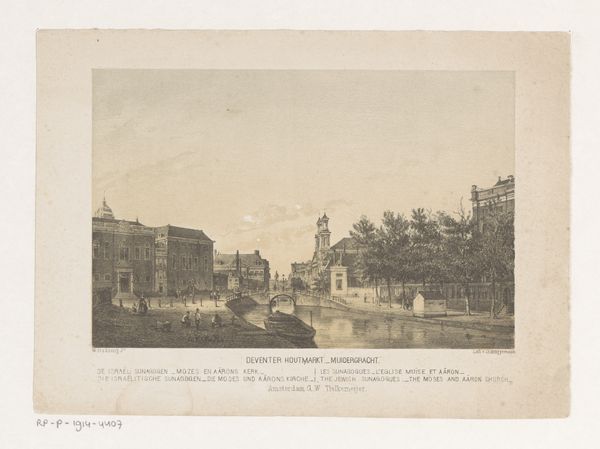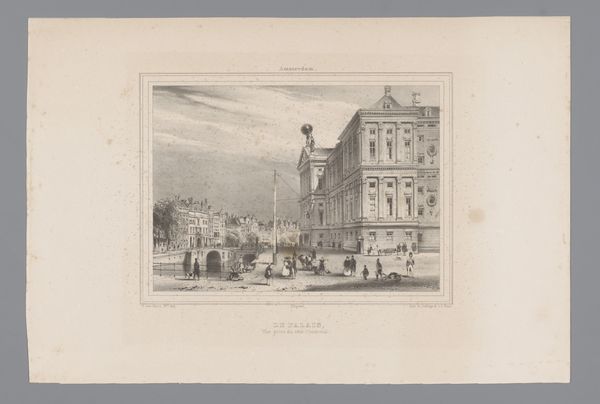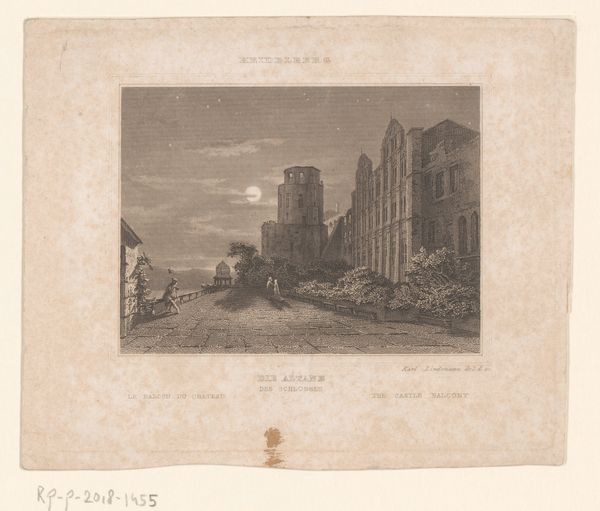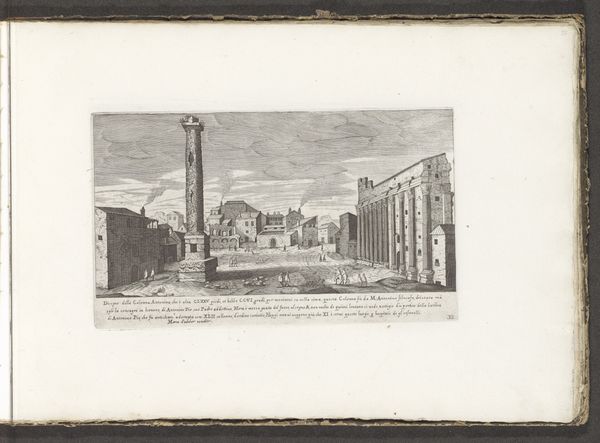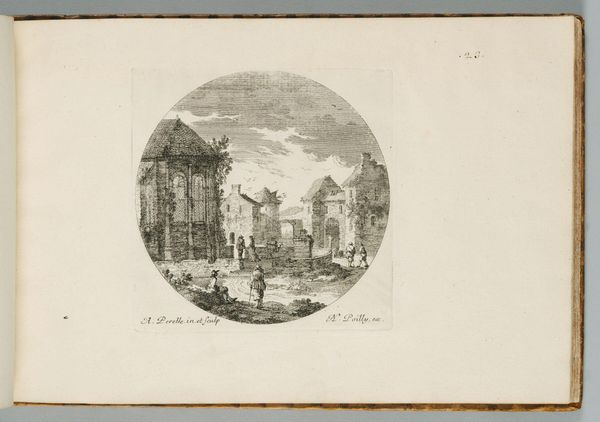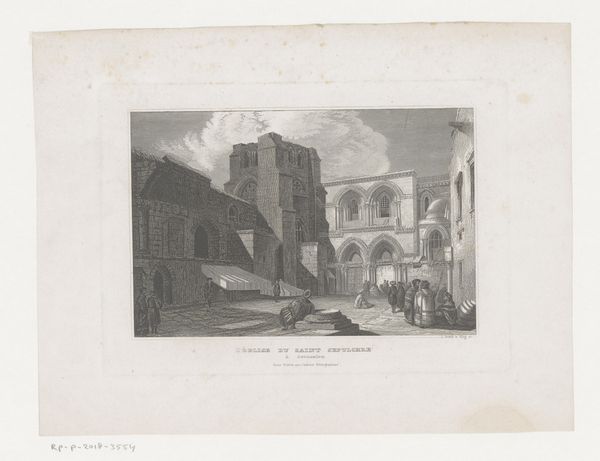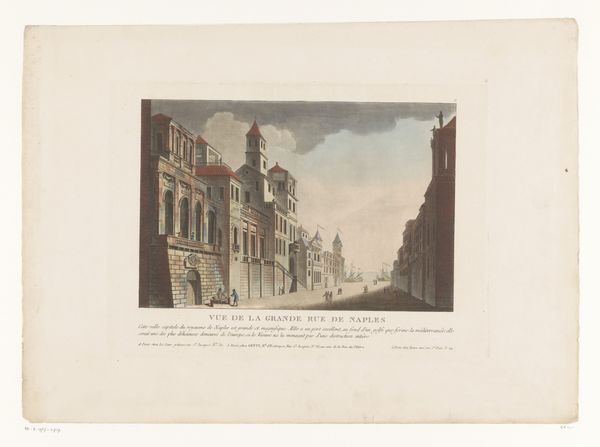
Dimensions: height 200 mm, width 290 mm
Copyright: Rijks Museum: Open Domain
Curator: Let's turn our attention to "Gezicht op de Burgplatz in Braunschweig," a print from 1843 held here at the Rijksmuseum. What springs to mind for you when you first see this engraving? Editor: Ah, Braunschweig! It feels incredibly still, doesn’t it? There’s a strange melancholy hanging over this scene, like a faded memory trying to hold onto detail. I’m drawn to that massive church. It feels both permanent and fragile somehow. Curator: Yes, I note the clear definition offered by the engraver to communicate this atmosphere of Romantic stillness. The artist gives great attention to the structural integrity of the Burgplatz itself. The engraving medium offers crisp lines and nuanced tonal gradients. Semiotically, we can also deconstruct how each architectural element communicates civic pride, even a kind of rigid order in the landscape itself. Editor: Rigid, perhaps, but the small figures give it life, wouldn’t you say? They inject a sense of humanity into what could otherwise feel overly formal. The artist positions those figures just so. Like a carefully choreographed stage set. Curator: Precisely! Those figures do add a layer of depth to the scene, creating an interplay of spatial relationships. The scale becomes very important; a smaller, subservient figure against an overwhelming background. Editor: Subservient… yes. I see your point. Though I also feel a strange tension. Like they’re tiny actors, aware that their roles are largely decorative, yet vital. Are we romanticizing a world that was in many ways highly unequal? Curator: It would be imprudent to neglect socio-political context, here, naturally, though it is first and foremost an artistic study in visual perception and representational style in landscape traditions, as evinced by the linear perspective itself. It allows us a deeper dive into art theory, perhaps invoking some principles of structuralism. Editor: Hmm, well for me, it also speaks to the artist's yearning for a simpler, bygone time. Before industrialization fully transformed everything. A time perhaps never quite as serene as they painted it in their minds! Curator: Yes, the artwork encapsulates both historical documentation and artistic interpretation, showcasing how technical mastery shapes emotional experience. Thank you. Editor: My pleasure. I think that after that, I will definitely be heading for a strong coffee to contemplate the tension between freedom and rigidity!
Comments
No comments
Be the first to comment and join the conversation on the ultimate creative platform.

